Fireworks in Yangzhou in March - Two day Tour
Yangzhou, a historical and cultural city located on the banks of the Yangtze River and the ancient Grand Canal, has been a bustling place since ancient times. Many nobles, generals, wealthy merchants, and skilled craftsmen have performed one legendary story after another here. Its infinite charm has attracted countless literati and scholars throughout history. Li Bai longed for it with the phrase "fireworks in Yangzhou in March", and Ouyang Xiu praised it with the phrase "unparalleled flowers and peonies in the world". Xu Ning gave it the reputation of "Three parts of the world are bright moon nights, and two parts are scoundrels, Yangzhou". Yangzhou has the most beautiful scenery called Yangzhou Slow, a different kind of exquisite life. Every step you take, you may discover a different millennium ancient city. Yangzhou enjoys the reputation of "China's first canal city".
In order to thank the medical staff for their dedication to the control of the COVID-19 epidemic, the scenic spots in Yangzhou are free of charge for medical staff with valid certificates.
The opening of Yangzhou high-speed railway has made it convenient for us to travel
March 2nd: G8302 Shanghai Hongqiao - Yangzhou East Station
March 3rd: C3793 Yangzhou - Shanghai Hongqiao
In 1 hour and 45 minutes, the high-speed railway arrives at Yangzhou East Station. After leaving the station, there is a very convenient bus. Take bus No. 89 and get off at Zhenyuan to see the street view of Yangzhou. Have lunch before going to the hotel, which is located by the moat and close to attractions such as Shouxi Lake.
After getting off the bus and walking along Wenchang Road, the Wenchang Pavilion at the intersection is a landmark building of Yangzhou city.
Built in the 13th year of the Wanli reign of the Ming Dynasty (1585), it was named "Wenchang Pavilion" because it was the Kuixing Tower of Yangzhou Prefectural School.

Entering from Wenhe North Road to Siwangting Road, you will see another attic - Siwangting, which is one of the iconic buildings in the center of Yangzhou city.
It is said to have been built during the Jiading period of the Southern Song Dynasty or during the Jiajing period.

Lunch in a time-honored shop across from Siwang Pavilion. Try the lion's head and Yangzhou fried rice.

3-2 Scenic spots: Yangzhou Eight Eccentrics Memorial Hall, Tuoling Lane, Tanghuai, Tianning Temple, Zhengbanqiao Memorial Hall, Shikefa Memorial Hall, 486 Non legacy Gathering Area, Geyuan, Dongguan Street
After lunch, walk to the hotel very close, complete the check-in procedures, and take a 30 minute break. Departing for nearby attractions, it takes about 10 minutes to arrive at the Yangzhou Eight Eccentrics Memorial Hall (free admission). Located in Gu Lane (Tuoling Lane), it is the only professional memorial hall in China that showcases and promotes the artistic achievements and innovative spirit of the "Yangzhou Eight Eccentrics".


A group of painters in Yangzhou during the Kangxi and Qianlong periods, represented by Jin Nong and Zheng Xie.


This ginkgo tree is one of the top ten famous trees in Yangzhou for over 500 years

Legend has it that Emperor Yang of Sui went to Yangzhou to see the Qionghua, saying, 'With just one flower, there is no one of its kind in the four seas.'.

Jin Nong lived with cranes here, adding charm to his lonely and sorrowful later years.
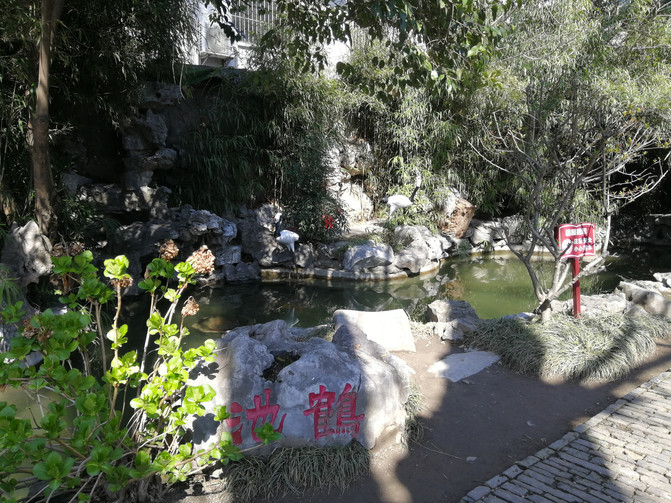
Zhuquan Pavilion - Water from this well was used in the seventh year of the Jin Nong reign. Surrounding the well are stacked rockeries, clear bamboo, and pebble paths
It has become a 'bamboo spring secluded realm'.

Sixty one selected works of calligraphy and painting from the Eight Eccentrics that have been passed down through generations have been engraved and displayed on both sides of the long corridor
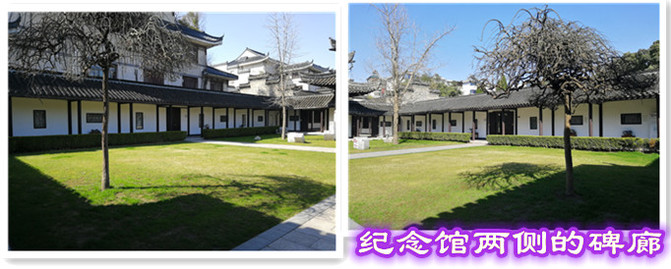
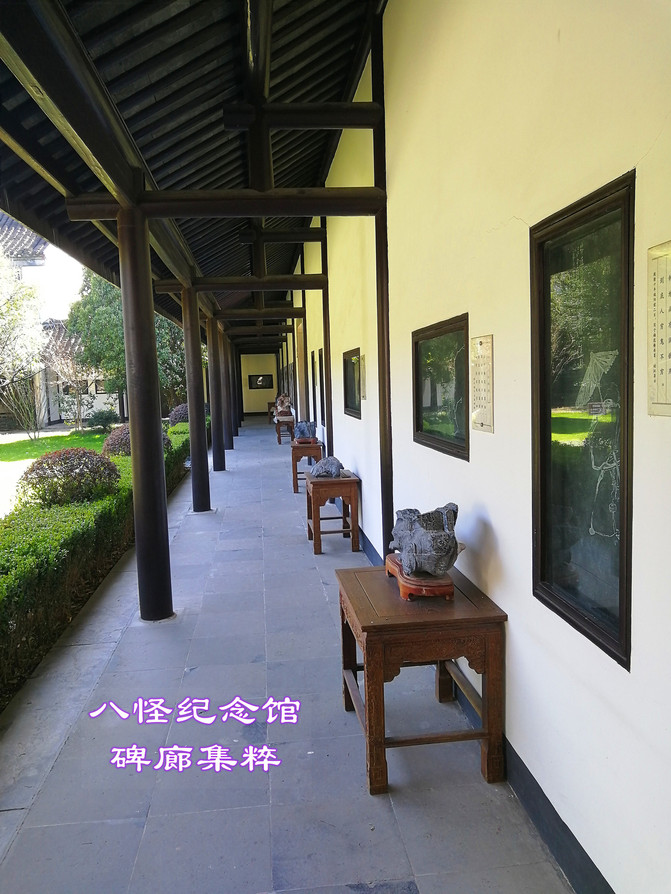

Walking along Tuoling Lane after leaving the memorial hall, there is a millennium old locust tree that is closely related to the famous idiom (Nanke Yimeng)! This famous Tang Dynasty tree allows us to feel the long history and cultural significance of Yangzhou.
The Most Beautiful Tuoling Lane

Millennium Tang Huai

After leaving Tuoling Lane and entering the moat along Wenhe North Road and Yanfu West Road, take a lap around the moat, and the scenery of the moat is dazzling



The moat's royal horse head


The Tianning Temple on the banks of the Hucheng River - a heritage site of the Grand Canal in China, was first built in the Eastern Jin Dynasty and is said to be the Xie An Villa. It was named "Tianning Temple" during the Zhenghe period of the Northern Song Dynasty and was listed as one of the eight ancient temples in Yangzhou during the Qing Dynasty. Emperor Kangxi once stayed here during his southern tour. This attraction is free of charge.

On both sides are 130 year old ginkgo trees


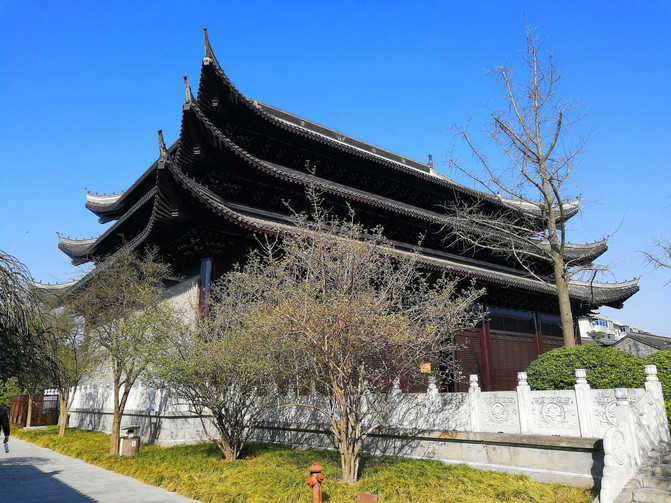



The Zheng Banqiao Memorial Hall in Tianning Temple takes you into a real Zheng Banqiao, a tragic and joyful life, and a legendary tale.



Not far from Tianning Temple along the moat is the Shi Kefa Memorial Hall (free of charge), a famous historical site commemorating the anti Qing national hero Shi Kefa in the late Ming Dynasty. It was first built during the Qianlong period of the Qing Dynasty, and in front of it are two 290 year old ginkgo trees.


Shi Kefa was an upright official with outstanding achievements, and was a famous politician in the late Ming Dynasty

The iron cannon supervised by Shi Kefa


Shi Kefa's Clothing and Crown Tomb


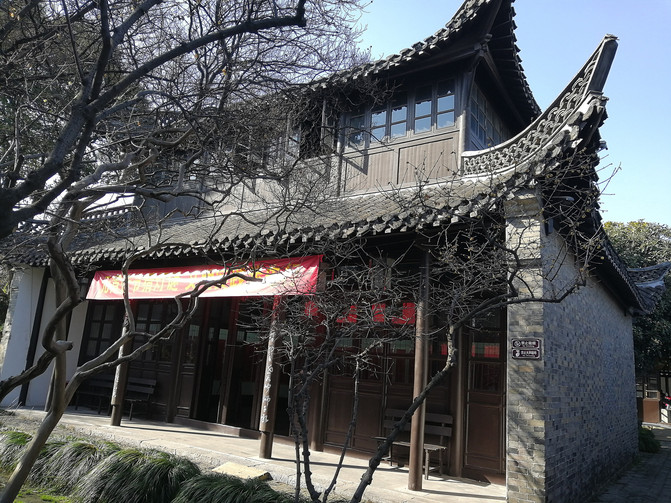







Walking along the moat, not far away is the non heritage material gathering area of Yangzhou
Yangzhou City was first built in 486 AD, when King Fuchai of Wu built the city of Han and opened the Han ditch, marking the beginning of Yangzhou City.







One of the Three Traditional Knives in Yangzhou - Foot Repair Shop







Across from the 486 cluster is a park,
Yiyuan - a private garden of salt merchants' mansions in Yangzhou during the Qing Dynasty, famous for its lush green bamboo plants and its rockery style throughout the four seasons of spring, summer, autumn, and winter. Each has its own characteristics, expressing the poetic and picturesque meaning of "spring scenery is beautiful and smiling, summer mountains are lush and dripping, autumn mountains are clear and makeup like, winter scenery is bleak and sleeping". The purpose of a garden is novel and the structure is rigorous, making it an isolated example of Chinese gardens. Medical personnel with valid identification are free of charge.
















Spring in a Garden

The Taihu Lake Lake Stone symbolizes the scenery of Jiangnan in midsummer




Yellowstone highlights the towering mountains of autumn

The white snow stones highlight the cold feeling of unmelted snow in winter






We enter through the north gate and exit through the south gate, entering Dongguan Street - the most representative historical old street in Yangzhou city. After thousands of years of accumulation, the street has left behind rich historical relics and cultural relics, making it the best preserved commercial ancient street among cities along the Grand Canal in China.














The Site of Dongmen City Tower in the Song Dynasty








Leaving Dongguan is the ancient ferry crossing of Dongguan



A night cruise on the Grand Canal of Beijing and Hangzhou costs 100 yuan, which seems a bit expensive. Take a look at the night scenery on both sides of the canal, and it takes 40 minutes to travel back and forth.



3-3 Scenic spots: Shouxi Lake, Daming Temple
After breakfast at the hotel, walk for about 10 minutes to Shouxi Lake and enjoy the street view while walking. Enter through the south gate and exit through the north gate, with Daming Temple at the north gate exit.
Admission to the scenic spot is 100 yuan, medical staff are free, and valid identification is required upon entry.

Rolling Stone Cave Heaven



Changti Spring Willow - is one of the twenty-four scenic spots in Yangzhou, a spring scenery of Shouxi Lake, with slender embankments, three steps and one willow, and pavilions like a canopy. The weeping willows adorn the beauty of the water town, cultivate the temperament of the people in the water town, and become an unforgettable scenery.
On the embankment, there are several green willows, half of which resemble West Lake.




Xu Garden - an ancient Chinese garden architecture dating back to the Qing Dynasty, built on the site of the "Peach Blossom Village" to commemorate the warlord Xu Baoshan.
There is a pavilion, a pavilion, and a pavilion in the garden, fully reflecting the exquisite elegance of the garden.




Listening to the Oriole Pavilion - Taking the meaning of Du Fu's "Two orioles singing on the green willows, a line of white egrets ascending to the blue sky",

Covering the ground with nanmu, carving pine, bamboo, plum, and patterns

Spring Grass Pond Chanting Pavilion - Taken from the poem "Ascending the Pond and Going Up the stairs" by the poet Xie Lingyun of the Northern and Southern Dynasties: Spring grass grows on the pond, and the willows in the garden sing.



Two large iron pots - Water control artifacts from over 1500 years ago

The century old ancient tree by Xuyuan - Chicken Claw Weapon

Skinny West Lake - Xiaohongqiao

Xiaojin Mountain is one of the 24 scenic spots of Shouxi Lake in Yangzhou. It is a small island in Shouxi Lake, originally named Changchun Ridge, built in the mid Qing Dynasty. It is the largest island in Shouxi Lake. Hangzhou has West Lake, Yangzhou has Slender West Lake; Zhenjiang has Jinshan, and Yangzhou has Xiaojinshan.


A relic of the Song Dynasty flower stone class, the treasure of Zhenyuan - basin shaped stalactites.


One of the 24 Scenic Spots of Slender West Lake: Spring with withered trees
Originally a ginkgo tree from the Tang Dynasty, it was struck by lightning and split into sections. Later, it soared into the sky and climbed up. In late spring and early summer, the flowers were red and the leaves were lush, like withered trees in spring, becoming a scenery in the garden.






Yuban Bridge - forms a narrow and elongated shape between Xiaojin Mountain and Changchun Ridge, resembling a green jade belt. There is a small and exquisite stone arch bridge, resembling a white jade plate on a green jade belt, which is one of the four bridges of misty rain.

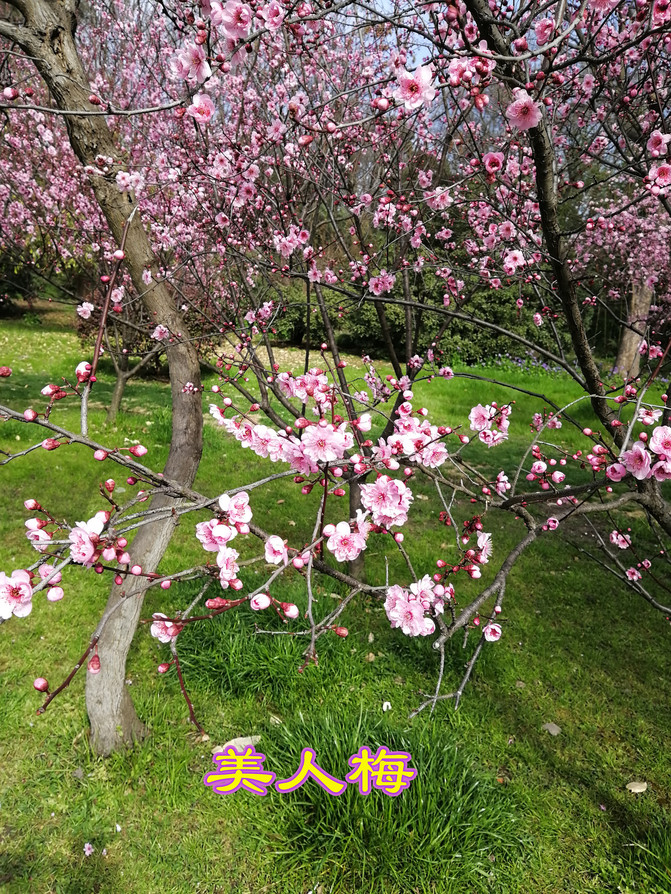



Wuting Bridge (Lotus Bridge) - is one of the landmark buildings in Yangzhou City and one of the top ten famous bridges in ancient China, known as the "most beautiful bridge in China". It was first built in the 22nd year of the Qianlong reign of the Qing Dynasty (1757), modeled after the Wulong Pavilion and the Seventeen Arch Bridge in Beihai, Beijing.
Unfortunately, the sky turned cloudy, sorry.



After crossing the Wuting Bridge, you will arrive at the White Pagoda. In the 49th year of the Qianlong reign of the Qing Dynasty (1784), the Salt Lake of the Two Huai Rivers raised funds to imitate the White Pagoda in Beihai, Beijing, and built the old tower base. The legend of "building a tower overnight" still exists today.
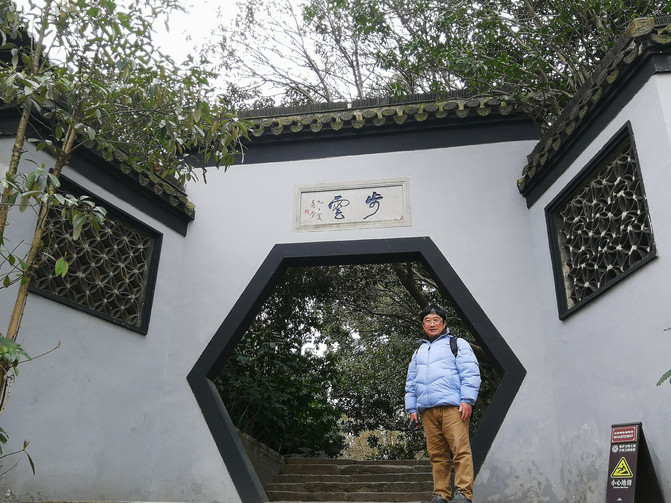



Lin Xiangxie

Linglong Flower Realm


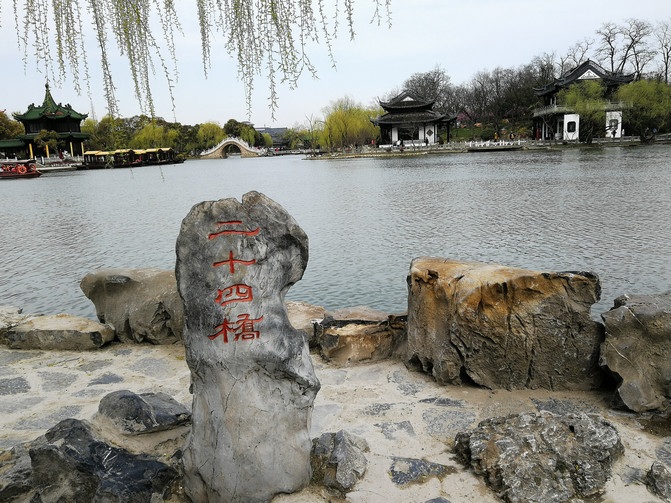

Xichun Terrace - is the main building of the Twenty Four Bridges Scenic Area.
It is said that the salt merchants in Yangzhou during the Qing Dynasty celebrated the emperor's birthday and was also one of the "24 Scenic Spots" of Yangzhou.

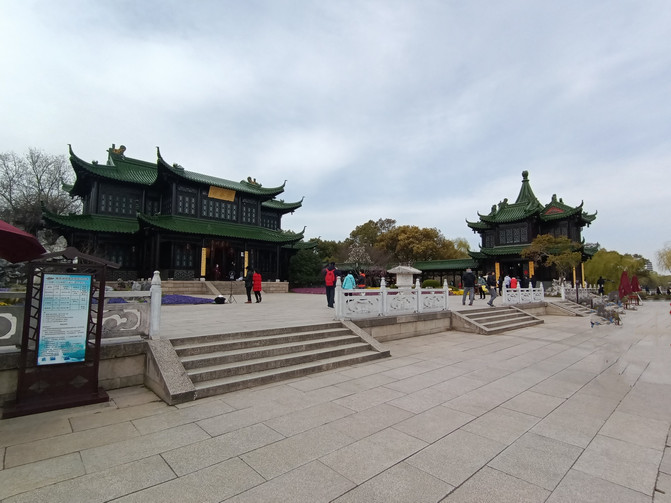



Twenty four Bridges - The poem of Du Mu of the Tang Dynasty that has been circulating for thousands of years: "The green mountains are hidden away from the water, and the grass in the south of the Yangtze River has not withered at the end of autumn. Where can the jade people teach the flute on the bright moon night of the twenty four bridges?" Single hole arch bridge, White Marble railing

Jingxiang Bookstore - a typical architectural style of the Qing Dynasty, is the lacquer book of Jin Nong. Jin Nong, as the leader of the Eight Eccentrics of Yangzhou, is skilled in poetry, literature, calligraphy, and painting, and often travels here.





One of the 24 Scenic Spots of Slender West Lake, Xu's Villa, a major salt merchant in Yangzhou. Pavilions and towers, rockeries and waterfalls, blooming flowers and green willows.




Jinquan Huayu - One of the 24 Scenic Spots of Shouxi Lake, was originally the villa of Wu Shanyu, a judge of the Ministry of Justice during the Qianlong period, and later belonged to the governor Zhang Zhengzhi.

There is a water archway in the west of the garden, which borders the island to the north and south. It is a rare water archway in China, engraved with the four characters "Jinquan Huayu".




Drunken Moon Flying Qiong - Inspired by ancient poems such as "Three parts of the world are bright moon nights, and two parts are scoundrels in Yangzhou" and "The fairy in the sky is called Flying Qiong, and I don't know when she was exiled to Guangling".

Shouxi Lake Bonsai Garden



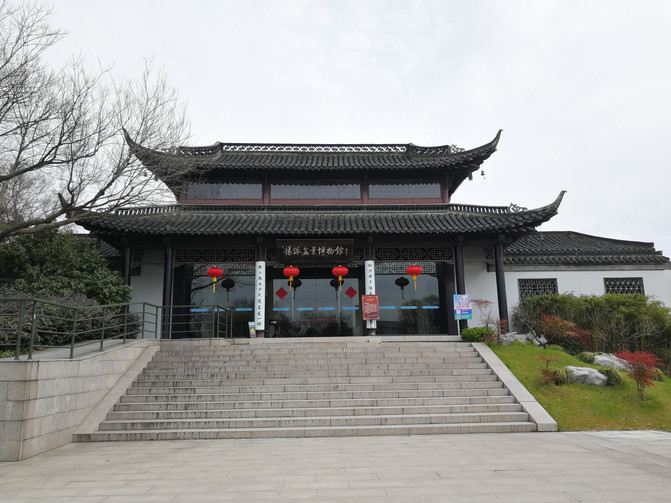

Songjing - an ancient well from the Southern Song Dynasty, from which porcelain shards from the Yuan Dynasty were excavated

After passing through Songjing, you will arrive at the north gate of Shouxi Lake. The next itinerary is Daming Temple


Daming Temple - originally built during the reign of Emperor Xiaowu of the Southern Song Dynasty (457-464 AD) and named after him. The tower is nine stories high and magnificent, known as the "most rugged and unique in China", hence the temple is also known as the "Qiling Temple".
The pair of stone lions standing south in front of the archway are particularly eye-catching. Built in the 49th year of the Qianlong reign and with a history of 230 years, the stone lions are carved according to the specifications of a royal garden. They have a strong and robust shape, with a straight head, squatting body, straight waist, and flat front paws, overlooking the distance. They are ancient relics of Chongning Temple, a famous temple in Yangzhou.

There are two stone tablets embedded on the walls of the east and west courtyards in front of the temple. To the east is Jiang Hengshan's "First View of Huaidong", and to the west is Wang Shu's calligraphy of "The Fifth Spring in the World".


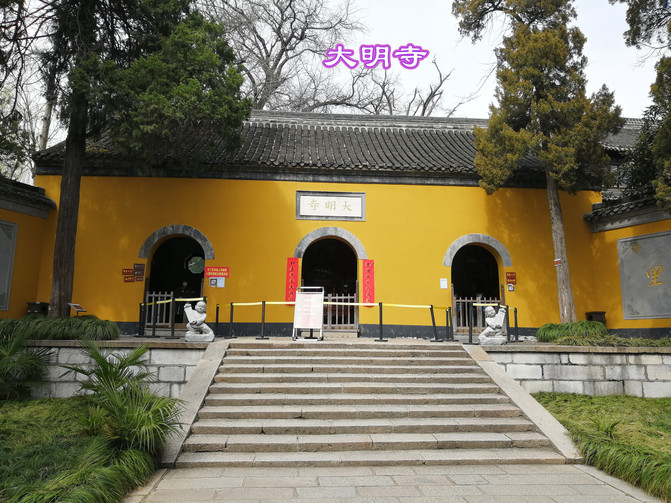
The the Shakya ManiHall of Daming Temple - the Shakya ManiHall is a Qing Dynasty building, three rooms wide, front and back corridors, triple eaves, and hollow flower ridges.



Qiling Pagoda - In the first year of Emperor Wen of Sui's Renshou reign (601 AD), Qiling Pagoda was built in Daming Temple. The pagoda is nine stories high and enshrines Buddha bones inside. It is said that the Buddha is located here and is one of the three treasures of Daming Temple.




Designed by the famous Chinese architect Liang Sicheng, the building is elegant and quaint, preserving the architectural art style of the Tang Dynasty. In the center of the hall is a statue of Jianzhen made of nanmu wood, modeled after the dry lacquer figurine of Jianzhen before his passing, with a calm and resolute expression.

One of the Three Treasures of Daming Temple - Inscription. Inside the pavilion stands a white jade Sumeru horizontal stele, with Guo Moruo's "Monument to Tang Jianzhen Great Monk" on the front and Zhao Puchu's inscription and eulogy on the back commemorating the 1200th anniversary of Jianzhen's passing. Therefore, it is known as the "Three Wonders Stele" of contemporary times.



One of the Three Treasures of Daming Temple, the "Yin Xin Shi Wu" stone tablet, was bestowed by Emperor Xuanzong Minning in the 15th year of the Qing Dynasty's Daoguang reign (1835) to Tao Shu, the Governor General of the Two Rivers and Salt Governor of the Two Huai Rivers.

Did you still enjoy the scenic spots on this trip? I will continue next time.
Previous Article:Yangzhou Shangri La Hotel, Experience the Famous Three Knives of Yangzhou
Next Article:One Day, One City - Yangzhou, Zhenjiang, Wuxi Three Day Travel Guide
